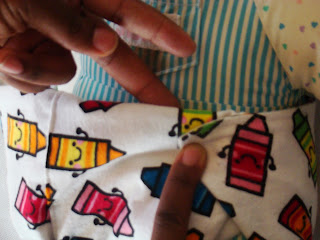Woo-Hoo! I made it! A full year of cloth diapering! It's surely been an adventurous journey.
When initially introduced to the idea I shuddered in fear. My first thoughts centered around time and work. I thought there weren't enough hours in the day to cloth diaper and on top of that it was unnecessary extra work to commit to. But, I can tell you from personal experience not only is it super simple, it is well worth it.
As previously stated I began cloth diapering my child at six weeks of age. I started as a part time cloth diaper-er only using reusable diapers 30-50% of the time. It wasn't until my baby reached three months that I decided to commit to full time, using reusable diapers more than 80%.
Since I was home for the most part my preference were Pre-folds with a waterproof PUL cover. At that point, it seemed to be the most economical choice as the cover could possibly remain clean all day. *Wondering how to fold a pre-fold around you baby? Click here for step by step instructions*
As I started to get out of the house All-in-Two's or Pocket Fitted's became top choice. These styles allowed for a quick change and snug fit around my baby's waist and thighs so I didn't have to worry about those dreaded blow outs. When it came to traveling with cloth diapers I found it fairly easy to manage a quick change, even with the poo diapers. As my little one soiled the diaper I used homemade solutions to spray on and store in the wet bag until I reached home to perform the pre-rinse. As I continued using cloth diapers it became easier and easier to incorporate them into my everyday life.
Cloth diapering can be a challenging thought, but, rest assured time gets easier with their use.
If you're looking for a jump start on cloth diapering without the initial financial commitment enter our New Year Raffle Giveaway! You could win 3 One Size Diapers!






















